Old Cars Weekly Cover Article:Chrysler Classic- 1 of 1 ‘37 fit for company royalty

The cover article in the June 7, 2012 issue of Old Cars Weekly highlights "Chrysler's Chrysler".
On Sunday, the Alco Black Beast and the 1966 Shelby Mustang GT-350 H will be participating in the 46th Annual Spring Meet Greater New York AACA at Old Westbury Gardens. Stop by on say hello.
Chrysler's Chrysler will be on exhibit at the Greenwich Concours d'Elegance.
Enjoy,
Howard Kroplick
Chrysler Classic
1-of-1 '37 fit for company royalty
By Angelo Van Bogart
Photos from Howard Kroplick
With Chrysler as her last name — Mrs. Walter P. Chrysler, to be exact — Della Chrysler’s automotive choices weren’t as limited as one might expect.
Certainly, Mrs. Chrysler drove a Chrysler automobile, but in 1937, she chose not to be carried in one of the dizzying number of production sedans and limousines in the Custom Imperial Eight or Royal Six line. Nor did Mrs. Chrysler order one of the semi-custom Derham town cars also carried in the 1937 Chrysler catalog. Instead, Mrs. Chrysler had a one-of-a-kind town car built on a Custom Imperial chassis of an art deco form that rivaled the wildest town cars built on Duesenberg and Rolls-Royce chassis.
The teardrop-shaped town car body on her 1937 Custom Imperial built by coachbuilder LeBaron dripped elegance and was perfectly mated to the new streamlined styling of the 1937 Chrysler line. The bulbous aluminum LeBaron passenger compartment was painted black and mimicked the production Chrysler pontoon front fenders. The period-perfect Chrysler streamlining began at the “ship’s prow” front-end, which was striped with horizontal grille bars and matching chrome speed lines along the hood sides. The horizontal theme was picked up by LeBaron with speed lines behind the rear door at the sail panel and with horizontally ribbed aluminum trim that circled the body from the back of one front fender to the rear of the opposite front fender. The subtle trim piece literally brought the whole car together — production chassis and front-end styling with unique town car coachwork — as it streaked from the front fender, across the running boards and unique rear fender skirts, around the back of the car and all the way to the rear of the opposite front fender.
Inside, this special town car continued the art deco theme from the production three-spoke steering wheel with ribbed bars and elegant gauges to the unique console built into the division window. Carpet as thick as a mink coat covered the floor, and seats as plush as the softest bed cradled rear seat passengers.
This slice of wheeled heaven wasn’t available to everyone, but was made available to those such as Mrs. Walter P. Chrysler, who could afford the craftsmanship of a hand-built LeBaron body fitted with the utmost of luxury by that Detroit concern. At this time, LeBaron was not yet absorbed by the Chrysler Corp., which later relegated the LeBaron name to a model. Rather, at this time, it was an independent subsidiary of the Briggs Body Co. that built bodies for Packard, Lincoln, Duesenberg and Pierce-Arrow, among others.
Mrs. Chrysler’s 1937 town car was not the first LeBaron-built body for Chrysler family, but it was probably the last. Just five years earlier, LeBaron had built a pair of custom 1932 Imperials for the Walter P. Chrysler family: a unique close-coupled sedan for Walter P. and a speedster for his son, Walter P. Chrysler, Jr. Shortly after the 1937 LeBaron town car was built, in May 1938, Walter P. suffered a stroke. In August of that year, Della Chrysler passed away. Walter P. followed her to eternal rest two years later, in 1940.
The chain of ownership
Sometime after Della Chrysler passed away, her 1937 LeBaron town car passed on to her daughter, Bernice Chrysler Garbisch. Her initials “BCG” were added with cast letters to each rear door. However, neither she or her chauffeur drove the car much and today the odometer has registered just 25,501 miles. Very few of those were added after the car left Garbisch’s garage and went into the collection of Long Island car collector Harry Gilbert in the 1950s.
“There is a period where Harry Gilbert somehow obtained the car,” said new owner Howard Kroplick. “I don’t have any documents or know what was the relationship between Gilbert and the Chryslers. I am tracking that down. Interesting, Gilbert lived in Huntington Bay, which is pretty close to the Vanderbilt Museum, and that’s possibly why he donated it to them in 1959.”
The story behind the town car’s travels from the Chrysler family to Harry Gilbert to the Vanderbilt Museum to Howard Kroplick isn’t as confusing as it appears. Kroplick has authored a book on the Vanderbilt Cup Races held in Long Island, N.Y., through 1910, and a book on the Long Island Motor Parkway. He’s been volunteering at the Suffolk County Vanderbilt Museum for almost a decade and owns the 1909 Alco "Black Beast" which won the 1909 and 1910 Vanderbilt Cup Races and raced in the first Indy 500 in 1911. Needless to say, anything Vanderbilt boils Kroplick’s oil. But for most of his time at the Vanderbilt Museum, Kroplick was completely unaware the Chrysler existed.
“I didn’t know about this car until about a year and a half ago,” he said. “I was asking if I could borrow another car in their collection that could go into a Vanderbilt Cup Race exhibit that I was preparing for the Cradle of Aviation Museum... The Vanderbilt Museum] had a 1909 Reo and they asked if I wanted it for the display. They took me to this very small garage at their curator’s cottage and there was this 1909 Reo... and off in the corner, I saw a big, black car.” The car's acres of black paint was beginning to flake off, the enormous teardrop fender skirts were off and the car was covered in dust, but Kroplick was smitten. “I asked about the car and they said, ‘That’s a Chrysler, and I asked ‘What’s the history of that?’”He learned it had been donated to the Vanderbilt Museum with the Reo, and suddenly, the Reo wasn’t as interesting to Kroplick.
“I kept looking at the car,” Kroplick said. “It looked in poor condition and they said, ‘It is actually not part of our collection. It was donated in 1959. It was made for Walter Chrysler’. I said, ‘If you ever consider putting up for sale, let me know.’” Perhaps inspired by Kroplick’s request, the museum’s board of trustees soon decided to offer the Chrysler family’s Chrysler at auction this past January.
“I told them, ‘I hope you get a lot of money for it,’” Kroplick said. “There was a lot of interest in it and I was the last one standing.”Although Kroplick he had to pay the museum $275,000 for the car, Kroplick couldn’t think of a better place for his hard-earned dollars.“It has a Long Island heritage, it has the Walter P. Chrysler heritage and it was associated indirectly with the Vanderbilts, which appealed to me, and most importantly, the money is going back to a good cause in establishing an endowment for the care and maintenance of the museum's historic archives, collections and exhibitions,” Kroplick said.
Although the number looks big, the Museum had appraised the Chrysler at more than $300,000 before bidding began. That doesn’t mean Kroplick didn’t have his doubts after the auctioneer declared him the winning bidder. “I just said, ‘Oh my goodness, I just bought a car that I don’t know if it runs, and it needs a paint job, but I am very pleased with it.”
The experts weigh in
Kroplick has a photographic timeline of the Chrysler beginning at the point its paint was drying to the mid-1980s, when the car was briefly displayed at the Vanderbilt Museum, to today. The photographic history shows the Chrysler remained a fine original through the 1980s. However, time or poor storage has since made the black paint flake off, and it probably isn’t considered “survivor car” material any longer.
“It has an aluminum body and the paint is coming off — that’s the main problem,” Kroplick said. “The thing that is very neat about this car is it is 95-98 percent all there. No one tried to tinker with it or restore it. The original parts are all there, so that’s pretty exciting.”
Kroplick has had several restorers and representatives from auction houses such as Bonhams view the car to determine what can be preserved and what has to be repaired. He also expects to have mechanics determine if the car’s Custom Imperial-specific 323.5-cid straight-eight can be made to run and its original 3-speed manual transmission can be made to shift. He also believes that much of the interior is nice enough to save.
“I am very much in the research stage where I am bringing in experts,” Kroplick said. “To me, it’s like owning an historic piece of art. I don’t want to over-restore it. Too many cars look like they came out of the factory last week. It could be made to look beautiful, but I don’t know if that’s what it needs.”
Kroplick says he’ll be excited to parade the Chryslers’ Chrysler on the show circuit. He also hopes to reunite it with one of its namesakes.
“I also had a conversation with Frank Rhodes Jr., [Walter Chrysler’s] great-grandson,” Kroplick said. “He is all excited about it. He was worried the car would be purchased and go overseas and never be seen again. I said I would love to have him come up and see the car and experience it again.”
You can learn more about Chryslers' Chrysler on Kroplick's award-winning website VanderbiltCupRaces.com .
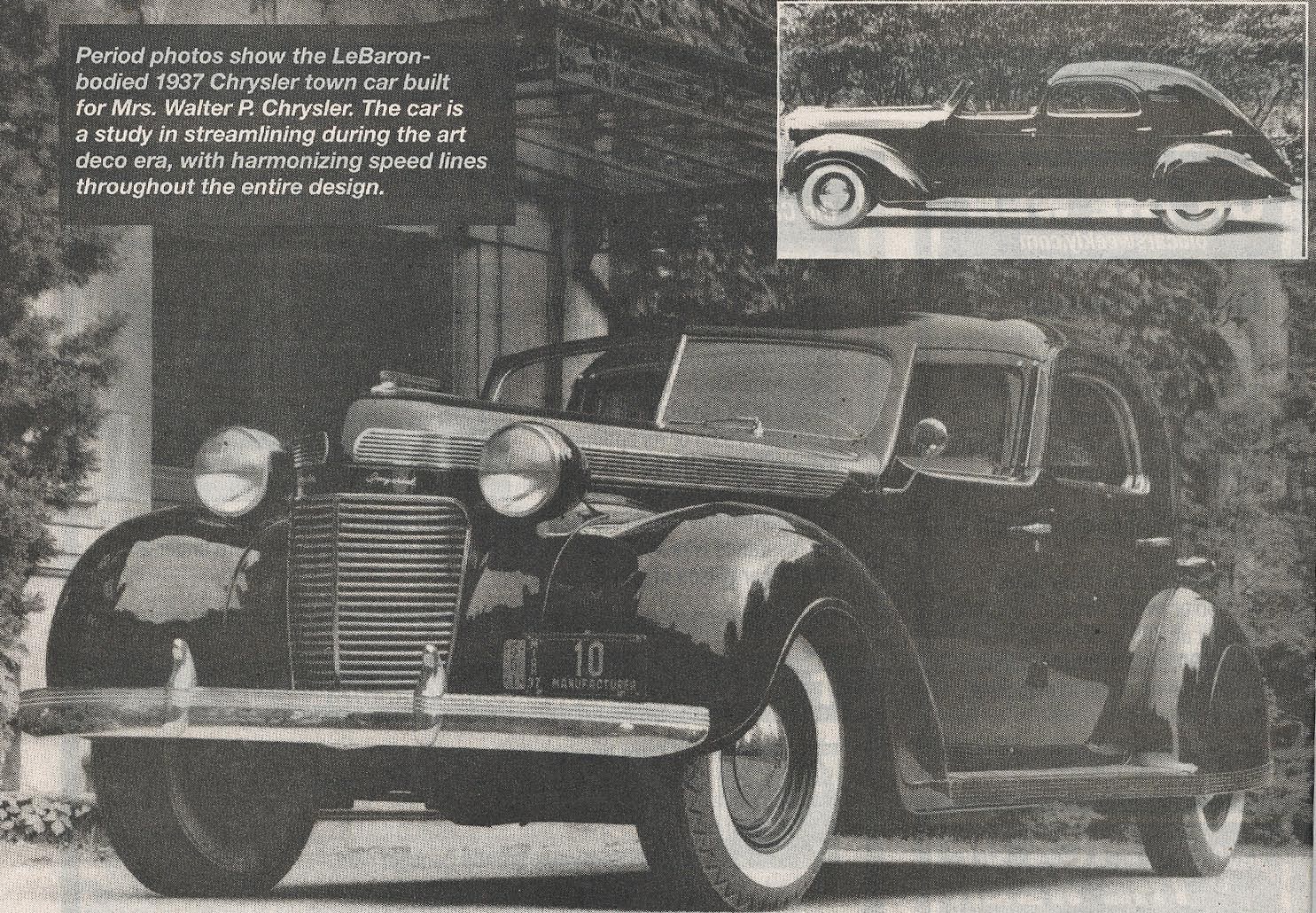
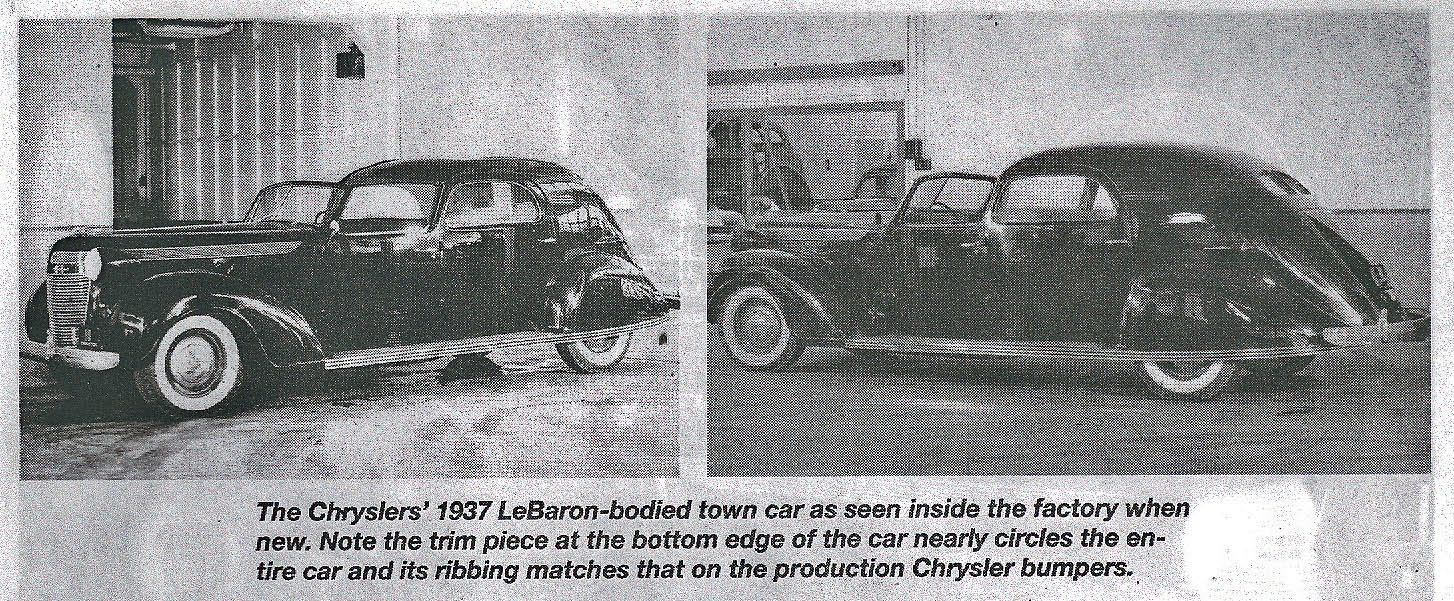
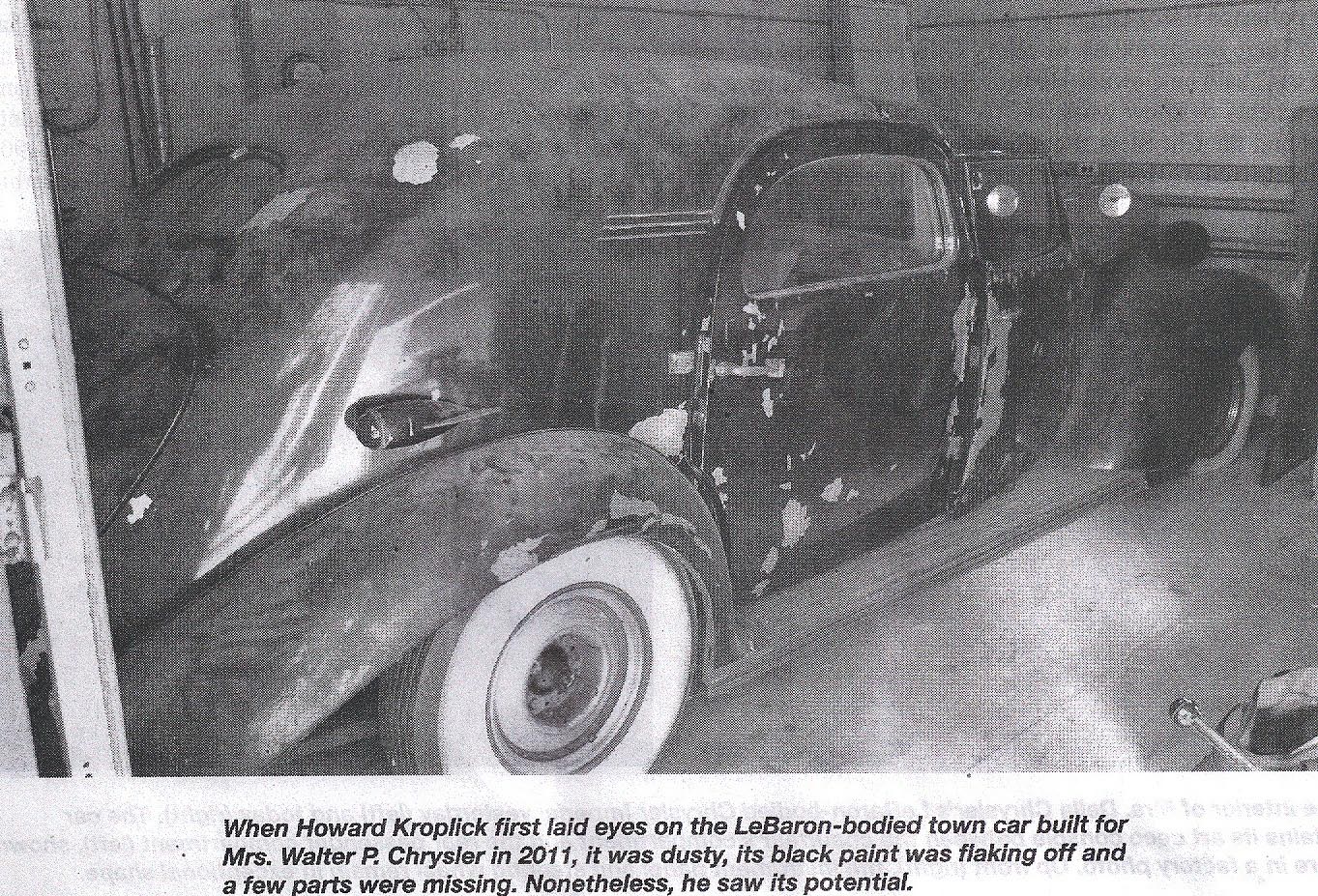
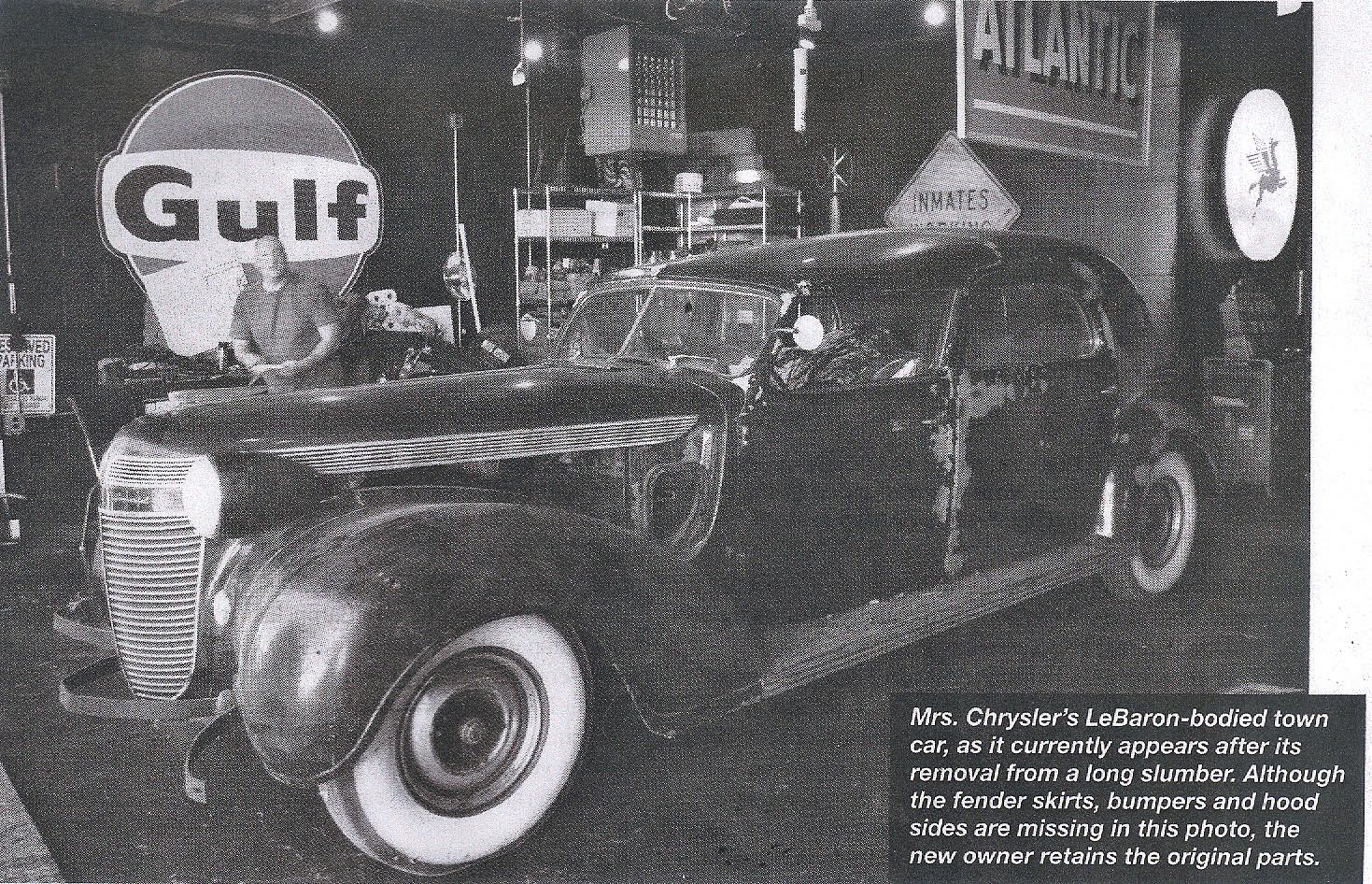
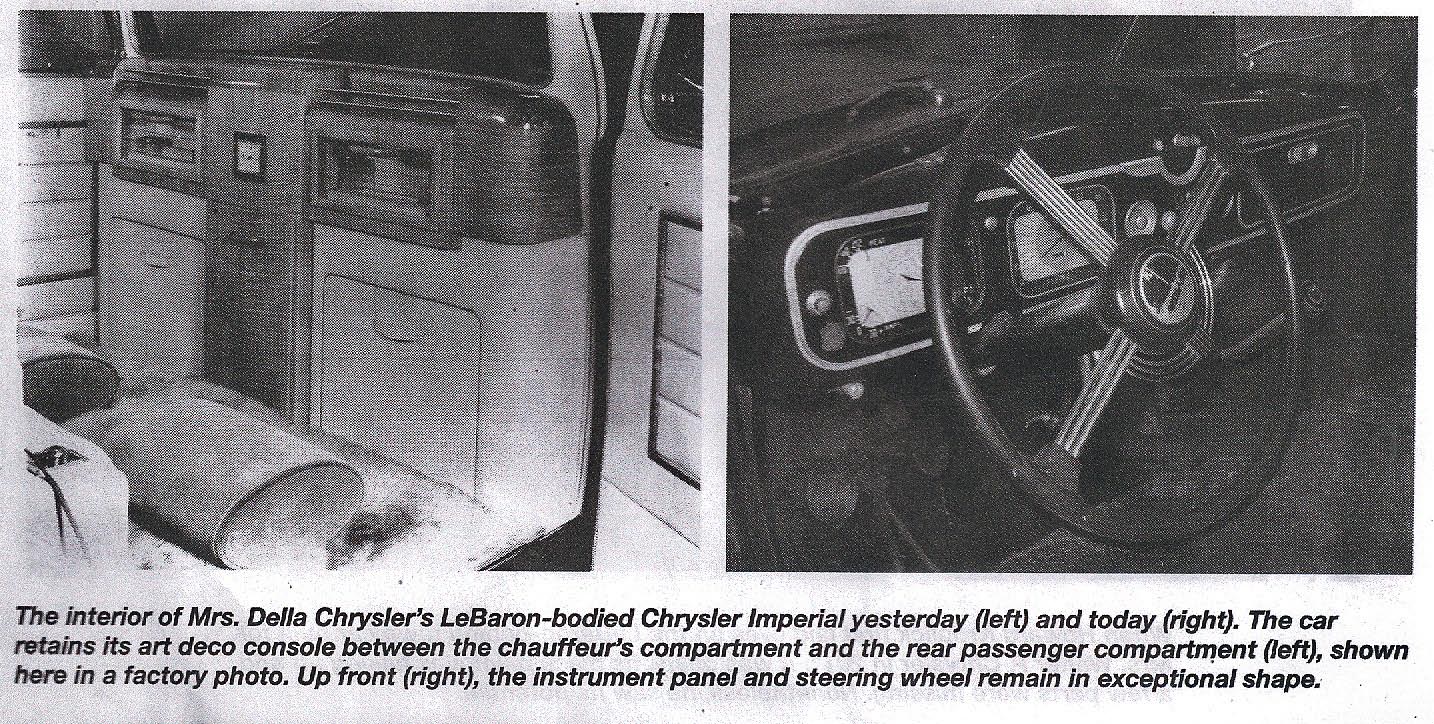
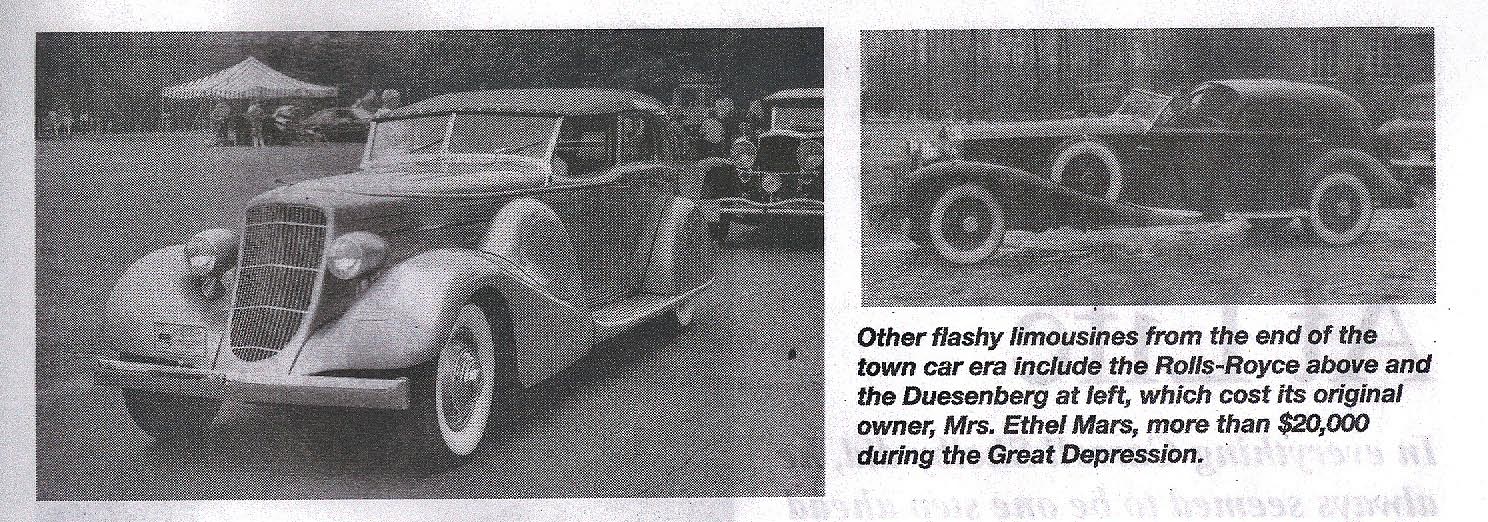

Comments
Howard, Congratulations on the front page coverage of your latest acquisition! Best of luck with your restoration…Marty